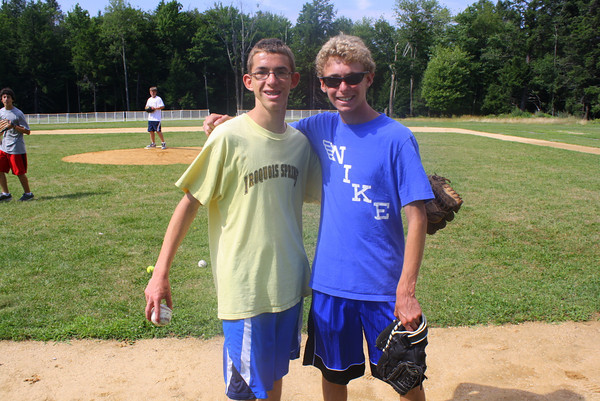Practicing Kindness
What act of kindness did you show today? This is a question I have started asking my children when we talk about their day. In light of recent events, like Hurricane Sandy and the tragedy at Sandy Hook Elementary school, there has never been a more important time to demonstrate altruism and give to others without expecting anything in return. The unselfish regard for, or devotion to the welfare of others, and has been widely demonstrated by the coming together of communities to help those in need. From providing needed supplies to offering messages of hope and support, these acts of kindness have helped so many families and communities that are suffering, as well as benefitting those who are doing the giving. But kindness goes even further than helping out when there is a tragedy. Kindness is something we should all be practicing on a daily basis. Though our lives are hectic at times, it only takes a moment to brighten someone else’s day and show that you care.
 Kindness teaches empathy, builds self-esteem and increases an overall feeling of well-being. These acts do not have to be on a grand scale, impacting the lives of many, but can be a simple gesture to one person that makes all the difference. A great example is something I witnessed just the other day while meeting a friend of mine. As she was walking across the parking lot, I noticed her stop to help an elderly woman who was struggling to lift a shopping cart onto the curb. It brought a smile to my face and made me appreciate my friend that much more. I have always been a big fan of helping others, especially when it is not asked for or expected. To know that I may be able to make someone’s day easier always makes my day better.
Kindness teaches empathy, builds self-esteem and increases an overall feeling of well-being. These acts do not have to be on a grand scale, impacting the lives of many, but can be a simple gesture to one person that makes all the difference. A great example is something I witnessed just the other day while meeting a friend of mine. As she was walking across the parking lot, I noticed her stop to help an elderly woman who was struggling to lift a shopping cart onto the curb. It brought a smile to my face and made me appreciate my friend that much more. I have always been a big fan of helping others, especially when it is not asked for or expected. To know that I may be able to make someone’s day easier always makes my day better.And I am not alone in this feeling. Studies show that we feel happier when we perform acts of kindness. A recent study, Kindness Counts, shows that when kids performed acts of kindness they significantly increased feelings of happiness and satisfaction. In the New York Times article, Nice Guys Finish First, David Brooks explains, people who are kind and compassionate are usually most successful.
Lead by Example: Be a role model. Don’t just Say It…Do It! If children see you (or any important adult in their life…teacher, camp counselor, grandparent) doing for others, they are more likely to model this behavior. By seeing someone they trust and respect perform an act of kindness, they are more likely to feel the need to help out too.
Get involved: The opportunities to help those in need are endless. Teens can commit to volunteering a number of hours each month, while younger children can accompany a parent to a one-day event. Volunteer experiences can open a young person’s eyes and hearts and make them feel empowered by being part of the solution.
Give Praise: Celebrate acts of kindness with words of praise and not rewards. Knowing that you may have made a difference in someone’s life is the reward in itself. When an act of kindness comes from the heart and not from a place of wanting something in return, it is that much more meaningful. Let your children know how proud you are of them, and let them share their good feelings as well.
 Give to Charity: Have your family gather toys and clothing that are still in good condition but no longer being used and drop them off at a local charity. Seeing that the belongings you no longer need are being put to good use by a family in need instills the importance of charity.
Give to Charity: Have your family gather toys and clothing that are still in good condition but no longer being used and drop them off at a local charity. Seeing that the belongings you no longer need are being put to good use by a family in need instills the importance of charity. Kindness is a lifelong skill that will be used in daily relationships at home, school, camp, and in the community. No act of kindness is too small. It all makes a difference!
“Every man must decide whether he will walk in the light of creative altruism or in the darkness of destructive selfishness” Martin Luther King Jr.



